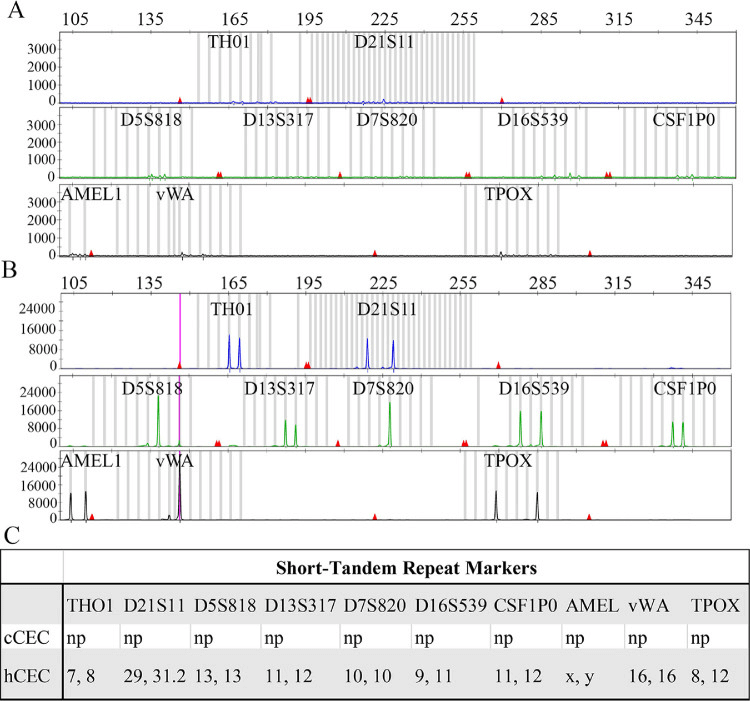Cell Line Authentication Services
Creative Bioarray provides accurate and reliable cell line authentication services for both human and animal cell lines. We aim to dispel any concerns about the presence of misidentification, cross contamination or genetic instability in the cells that our customers are working with. Our results are authoritative and widely recognized.
The Importance of Cell Line Authentication
Research on human development and disease relies heavily on the analysis of human cell lines isolated in culture. Misidentification, contamination and improper annotation of cell lines can affect scientific reproducibility. Research and development involving the use of cell lines requires an accurate understanding of the purity and source of cell lines used. This can only be ensured by regularly monitoring whether the cultured cell line may be contaminated by other cells and verifying the identity of the cell line. Without such monitoring, inter- and intra-species cell line contamination is likely to occur and may lead to erroneous conclusions, thereby losing researchers' time, energy, and resources. The confirmed and reliable cell line identity verification method is to test the characteristic genetic markers of the cells, including cell membrane species antigens, isoenzymes, chromosomes and DNA fingerprints, etc. The database of each labeling system is then used to compare with the results obtained from previous cell line tests in cell culture.
 Fig 1. Comparative analysis of short tandem repeat analysis (STR) between human primary choroidal endothelial cells (hCEC) and commercial human choroidal endothelial cells (cCEC). (Peavey J, et al. 2020)
Fig 1. Comparative analysis of short tandem repeat analysis (STR) between human primary choroidal endothelial cells (hCEC) and commercial human choroidal endothelial cells (cCEC). (Peavey J, et al. 2020)
What is cell line authentication?
Cell line authentication mainly focuses on the following four aspects:
- Species identification. Short tandem repeat (STR) profiling analysis is the most important method. Other commonly used methods include chromosome analysis, isoenzyme analysis, etc.
- Identification of tissue of origin. Morphological methods and detection of tissue-specific antigens are usually used approaches.
- Analysis of cross contamination. Isoenzymology, STR profiling, and karyotype analysis can confirm the presence or absence of cross-contamination in cell cultures.
- Identification of malignant transformation. Karyotype, cell growth behavior and tumor formation in nude mice are useful indicators.
Availability of Cell Line Authentication Services
NIH and many academic journals define guidelines for authentication of any cell line, instructing cell lines to be used in projects that meet funding criteria or papers submitted for publication. Authentication is required every time a new line is established or acquired. Our cell line authentication service can be used for cell lines in the following scenarios:
- Before cell line cryopreservation;
- Every two months when the cultured cells are actively growing;
- Any point in time when cell line performance produces inconsistent or unexpected results;
- If more than one cell line is used in the ongoing research, the cells must be tested to eliminate cross-contamination;
- Before starting a new experiment and before the article is published, the cells must be tested for authentication;
Our Services
STR Profiling Analysis
Short tandem repeats, also known as microsatellites, are tandemly repetitive DNA sequence elements. In human genome, they are one of the most informative polymorphic markers. STR profiling analysis is considered as the basis of standard for cell line authentication. In particular, it helps ensure the integrity and quality of human cell lines.
Karyotyping
Karyotyping is the process of artificially staining, pairing, numbering, grouping and morphological analyzing all the chromosomes of an organism according to the inherent morphological and structural characteristics. Karyotyping is an essential test to determine whether a cell line maintains a stable genotype.
Isoenzyme Analysis
Isoenzyme analysis is commonly used in conjunction with STP profiling or karyotyping. It is technically simple, rapid and robust. Electrophoretic banding patterns are used to examine the differences in the structure and mobility of various intracellular enzymes in different species.
Human Leukocyte Antigen (HLA) Typing
Human leukocyte antigens, a family of genes encoding the major histocompatibility complex (MHC) proteins, are one of the most polymorphic genes in human. HLP typing can be used to differentiate cell lines within a species.
Customized Cell Line Authentication Services
Our experienced scientists can customize the best solution according to our customers' requirements. For particular cell types, such as tumor cells and stem cells, we have the ability to select more targeted approaches to achieve more comprehensive and accurate results.
Our Advantages
- Extensive experience and state-of-the-art technique platforms.
- Comprehensive services and customized solutions.
- Rigorous cell line labeling and real-time monitoring.
- Accurate results and reliable analysis.
- Fast turnaround time and competitive price.
With years of experience in cell line authentication for human cell lines, mouse cell lines, monkey cell lines and some special cell lines, Creative Bioarray can be your reliable partner to help you ensure the reliability and reproducibility of your experimental results.
If you have any doubts about your cell line or experimental results, please feel free to contact us. We look forward to working with you.
References:
- Fusenig N E, et al. The need for a worldwide consensus for cell line authentication: experience implementing a mandatory requirement at the International Journal of Cancer. PLoS biology, 2017, 15(4): e2001438.
- Bian X, et al. A combination of species identification and STR profiling identifies cross-contaminated cells from 482 human tumor cell lines. Scientific reports, 2017, 7(1): 9774.
- Peavey J, Malek G. Cell Line Authentication in Vision Research and Beyond: A Tale Retold[J]. Investigative Ophthalmology & Visual Science, 2020, 61(6): 19-19.
For research use only. Not for any other purpose.

 Fig 1. Comparative analysis of short tandem repeat analysis (STR) between human primary choroidal endothelial cells (hCEC) and commercial human choroidal endothelial cells (cCEC). (Peavey J, et al. 2020)
Fig 1. Comparative analysis of short tandem repeat analysis (STR) between human primary choroidal endothelial cells (hCEC) and commercial human choroidal endothelial cells (cCEC). (Peavey J, et al. 2020) 